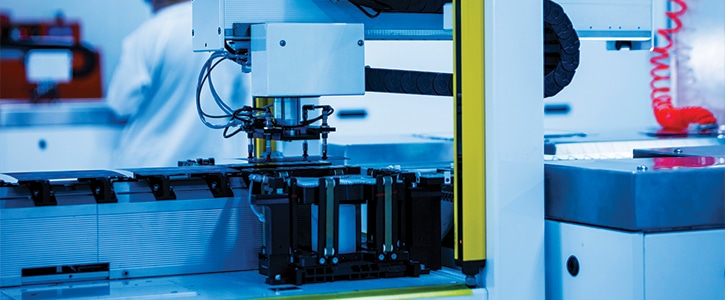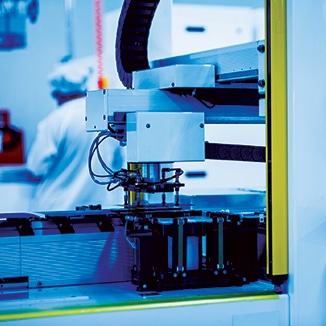
It’s been a little less than two years since McKinsey blew a clarion call about the digital revolution in manufacturing:
“The digital revolution is now breaching the walls of manufacturing as it continues to disrupt media, finance, consumer products, healthcare, and other sectors. Indeed, the explosion in data and new computing capabilities—along with advances in other areas such as artificial intelligence, automation and robotics, additive technology, and human-machine interaction—are unleashing innovations that will change the nature of manufacturing itself. Industry and academic leaders agree that digital-manufacturing technologies will transform every link in the manufacturing value chain, from research and development, supply chain, and factory operations to marketing, sales, and service. Digital connectivity among designers, managers, workers, consumers, and physical industrial assets will unlock enormous value and change the manufacturing landscape forever.”
The Role of Disruption in Manufacturing’s Digital Revolution
Looking back at that analysis and its predictions, I wondered, “How fast has this digital revolution been unlocked? To what extent has digital disruption transformed the manufacturing sector?” A look at recent studies finds the answers are not quite clear.
Contradictions abound in recent analysis of manufacturing’s digital revolution. For example, a report by Fujitsu, “Fit for Digital: Co-Creation in the Age of Disruption,” shows the sector embracing digital technology in a rather fearless manner. Yet, Microsoft, questions, “Is Manufacturing ready for digital disruption?” This blog compares the two perspectives, and suggests that, ready or not, the digitization of the manufacturing industry is a seemingly unstoppable force.
Fujitsu Claims Digital Readiness is at Hand in the Age of Disruption
According to the Fujitsu report that studied the U.K. manufacturing sector, 90 percent of those queried said that manufacturing has already been digitally disrupted, and an even greater percentage expect it to be disrupted more in the future. Other statistics from the study:
- Nearly half said the CIO is driving organizational response to digital disruption in manufacturing organizations, in contrast to other sectors (e.g., retail, financial services, public) that point to the CEO or a combination of C-suite players.
- 82% see this as an exciting time in manufacturing, with plenty of opportunities.
- 86% say their organizations must innovate faster if they are to stay relevant in the market.
“For manufacturers, digital disruption is as much about the transformation of business processes as it is business models and revenue streams,” notes Graeme Wright, CTO for manufacturing, utilities, and services, U.K. and Ireland, at Fujitsu.
Microsoft Study Cautions Against Overstating Digital Readiness in Manufacturing
The Microsoft study (also of the U.K. manufacturing sector) had a more cautious take when considering the question of digital readiness:
“According to our recent survey of more than 1,000 U.K. business leaders, the answer for many manufacturers might be ‘not quite yet.’ Manufacturers were the least likely to think their industry would be disrupted by digital technology. While digital transformation is already reshaping many major U.K. industries, those with a high dependency on physical assets such as manufacturing find the idea of transformation somewhat challenging.”
Manufacturing’s Digital Revolution is a Necessity
The reports concur that manufacturers embracing digital transformation are thriving, and that — as a group, and by necessity — they are finding new and innovative ways to make the most of digital technology, in all aspects of their business, from products to processes to personnel.
Overcoming Fear and Diving Into Disruption: Manufacturing’s Digital Revolution
Elsewhere, a column on Forbes asserts that the main issue holding back business leaders from “plunging full-throttle into digital transformation” is fear — specifically fear of the unknown, since this is uncharted territory for most organizations. “Paramount among these fears are [those] of cannibalization, of undermining long-established and currently profitable ways of doing business, and replacing it with something new and unknown,” says Forbes’ Joe McKendrick. “But disrupting one’s own business may be the only way to stave off the threats of disruption by hungry and tech-savvy startups.”
The Forbes piece draws on an interview with Ganesh Ayyar, CEO of Mphasis, and Tyler Wry, professor at the University of Pennsylvania’s Wharton School on Knowledge@Wharton to list seven emerging truths of digital disruption:
- Digital transformation is hard work. “When you’re talking about a digital transformation in an analog industry, with cannibalization, there is an incredible amount of risk that gets layered onto these decisions when they’re in established organizations versus small firms or start-ups,” says Wry. “This is something that takes a lot of thought, and it’s a very challenging thing: how you engage cannibalization in practice, because you are risking existing relationships, you are risking existing business lines, revenue streams, employees. And it’s a really tough challenge.”
- Digital transformation is not about technology. While it may seem counter-intuitive, digital transformation shouldn’t be pinned to a particular technology. “Technology is changing at such a fast pace that if an organization implements a technology and calls itself digital, it’s missing the point,” comments Wry. The point is to develop the capabilities to guide the organization through ongoing changes as technologies change.
- Corporate culture and speed matter. Embracing digital technologies doesn’t make an enterprise a digital one. Corporate culture is what delivers, along with the ability to boost productivity in a massive way.
- A digital-savvy corporate culture goes deep. Startups tend to have what-have-we-got-to-lose cultures, and are comfortable with applying cloud, data analytics, mobile, and social media to disrupt and separate established companies from their customers. Established organizations find it much more difficult to have a digital mindset sink in everywhere in the company.
- The success of digital transformation depends on the ability to measure progress. Measurement is key, and the most important ones are behavioral.
- Digital leaders are open leaders. According to Wry, becoming a digital leader may mean unlearning a lifetime of management skills. Digitally savvy leaders are known for “being open to change, receptive to new ways of learning, willing to butt up against areas where [they] don’t know things, and then not react out of fear or feel threatened as the person in the room who knows the most.”
- Digital transformation means thinking like an entrepreneur. What matters in digital transformation is the way people are able to assemble technologies into new ideas or concepts, regardless of how far it may stray from the established business model.
All these “emerging truths” represent change, and that by definition involves risk, but in an age of transformation such as we are in, the risk of maintaining the status quo might be far costlier in the long run. Based on the comments in the Fujitsu survey, that would appear to be a growing consensus.
Questions for the C-Suite
In McKinsey’s seminal article, they closed by posing a series of questions that they believed everyone in the C-suite should be asking himself or herself about digital transformation. Those questions hold today and are well worth asking again:
- How will digital disrupt my industry in the next five to ten years, and what new ecosystems will emerge?
- Where is the value for my company, and how can we maximize it?
- How close is the revolution to our factory doors, and where should I make investments in infrastructure, cybersecurity, and partnerships?
- What new capabilities, skills, and mind-sets will we need in our organization? How will we identify, recruit, and retain the right new talent?
- What should we pilot now to start capturing this value?
When these questions are asked and answered, moving “full-throttle” into this new world of manufacturing will likely be less anxious. Those who go through this process first will have a competitive advantage upon those who hesitate.
Are you curious to see where you stand in your Digital Thread adoption readiness?






